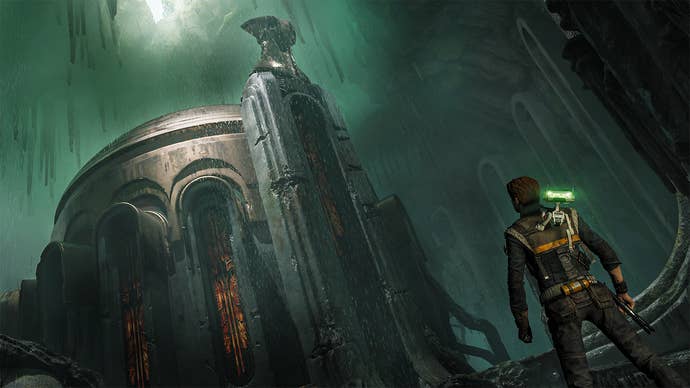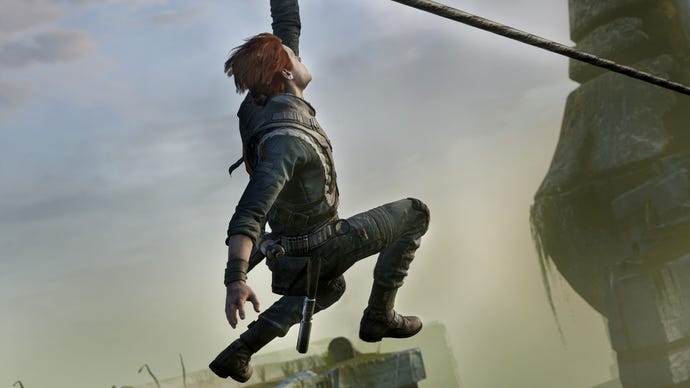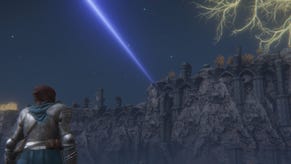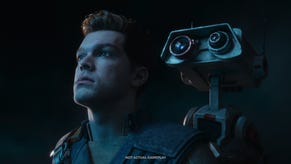Why Star Wars Jedi: Fallen Order Doesn't Have Fast Travel
Fallen Order dispenses with a modern convenience in the name of exploration.
This article first appeared on USgamer, a partner publication of VG247. Some content, such as this article, has been migrated to VG247 for posterity after USgamer's closure - but it has not been edited or further vetted by the VG247 team.
I had an interesting problem while playing Star Wars Jedi: Fallen Order earlier this week. I was deep within Zeffo, one of the early planets, but I was running out of time in the appointment and I wanted a chance to visit Dathomir. I figured I could fast travel back to the beginning of the level and fly right out. There was just one problem.
As it turns out, Fallen Order doesn't really have fast travel. If you want to leave and head to another planet for any reason—something you can totally do in the non-linear Fallen Order—you need to hoof it back to your ship on your own. Shortcuts are not the Jedi way.
This is a little unusual for a game of this type. Fallen Order is explicitly a mix of elements from the Soulsborne and Metroidvania genres, featuring the exploration of the former and the combat of the latter. But many of the modern day examples of those genres—Hollow Knight and Dark Souls 3, to name just two—feature fast travel for the sake of convenience.

The benefits are obvious. It takes the pressure off players to remember every step they take, allowing them to store other types of information instead. It also makes it easier for developers to create large, interconnected maps, like the one found in Hollow Knight.
The downside is that fast travel breaks immersion, artifically removing players from the world and sending them into a loading screen. It also cuts into the inherent desire to explore. Given the opportunity to use fast travel, players are more likely to hew to the critical path.
Hence, Respawn's decision to drop fast travel in favor of more traditional traversal, says producer Blair Brown. "A lot of the game is traversal, re-traversal, and exploration. Not having fast travel encourages the player to go off the beaten path; find quick routes, and master the level. Also as you play through you'll see some stuff that you wouldn't if you fast traveled through the critical path every time."
This sort of exploration is important to Respawn. Despite the initial reveal, which left many believing that Respawn was making Uncharted 2 with lightsabers, Fallen Order is proudly non-linear. It's like Metroid Prime 3 in that you'll sometimes show up at a planet and find yourself unable to enter until you have a specific power, and like Dark Souls in that sometimes you'll spot what looks like a powerful enemy just chilling in the distance. Fallen Order's version of this is something called a "Bynog"?—a dragon-like creature that can be seen hanging out on a bridge across the way on Bogano.
"You get to learn about him," Brown teases.
"He's a really good landmark," combat designer Jason De Heras adds. "He's there to spark interest."
All of this comes with maps that manage to feel quite large, even without fast travel. Zeffo is one of the earliest levels as far as I can tell, but it's filled with multi-level caverns, shortcuts, and puzzles. In order to get to Dathomir on time, I finally had to actually go to another station and load up a fresh save because it would have taken too much time to get back to the Mantis.
Ultimately, I'm not sure I'm all the way down with Respawn getting rid of fast travel in Fallen Order, mostly because it really is that useful. But it does give it that undeniable old school feel, like Super Metroid of Castlevania: Symphony of the Night. That's not a terrible feeling to have.
Star Wars Jedi: Fallen Order will be out November 15 on Xbox One, PC, and PS4. You can find all of our coverage right here.
Disclosure: Travel and lodging for this event was covered by EA










